Not many creator-owned series can run 30 issues, let alone twice that. But Harrow County and The Sixth Gun were too well made for readers (like myself) to ignore. So the announcement of the merging of the title’s creative teams with Dark Horse’s Black Manor, the upcoming four-issue miniseries, turned a lot of heads. Cullen Bunn, Brian Hurtt, and Tyler Crook talked to The Beat about their new title, their collaboration process, and the effect working on long-running series has on a creator. Find the answers to all of that and more below.
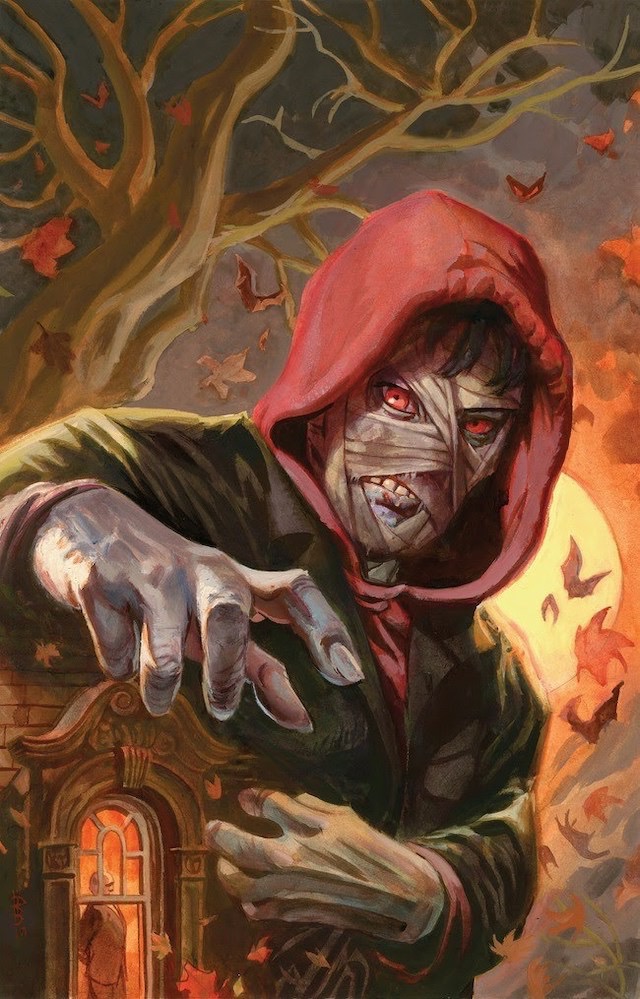
There are numerous interpretations of magic and the rules that define it. How is magic conveyed in Manor Black?
Cullen Bunn: We lean HEAVILY into the idea of rules in Manor Black. Magic is driven by certain laws that define how it can be used, and there are schools or families of magic that each interpret and interact with those rules differently. There are also (as you might imagine) magicians who blatantly break those laws to varying degrees of success. So, as we dive into this story, we meet characters who are either railing against these rules, are rallying under the banner of the law, or are being stifled and choked by tradition.
As to the manifestation of magic itself, you’re not going to see a lot of magicians in pointy hats throwing magic missiles and fireballs at one another. There is magical conflict, sure. There is fire. Oh, is there ever fire. But the magic is portrayed in a more subdued way.
Those rules of magic see to that.
Until the rules are broken.
It seems like Roman Black is a user of black magic, but he’s fighting against evil. How does that juxtaposition play out in the series?
CB: Roman is a blood magician, meaning most of his powers are manifested through the use of blood–his and the blood of others. It’s not so simple as dark magic and light magic. Every magician defines how they will use their gifts. While Roman is no angel, he definitely leans toward goodness. That doesn’t mean every member of his family feels the same.
Brian Hurtt: Manor Black is less a story of the conflict of good versus evil as it is about differing philosophies and generational conflict. The core of the series deals with the struggles that come with change and the differing ways that people go about enacting change.
It’s interesting that Roman chooses to adopt an heir rather than choose one of his children. Is the meaning of family a central theme of the story?
CB: Absolutely. Family is the key to this story and, really, to this world. Just in the first few issues, you’ll see Roman’s family dynamic come to the forefront. And we have a much bigger world that we’ve been developing, and at every turn, we’re seeing family play a role.
BH: I think it’s safe to say that the dynamics of Manor Black were taut and complicated before the introduction of the character of Ari into the mix. When we meet them, the family is consumed with the inevitable succession as Roman is facing the ritual “Descent”. Ari’s presence is only going to exasperate the familial tensions and the power dynamics within the house. There are as many different motivations and schemes under the roof of Manor Black as there are characters and that is going to provide us with some really fun bits of palace intrigue throughout this series.
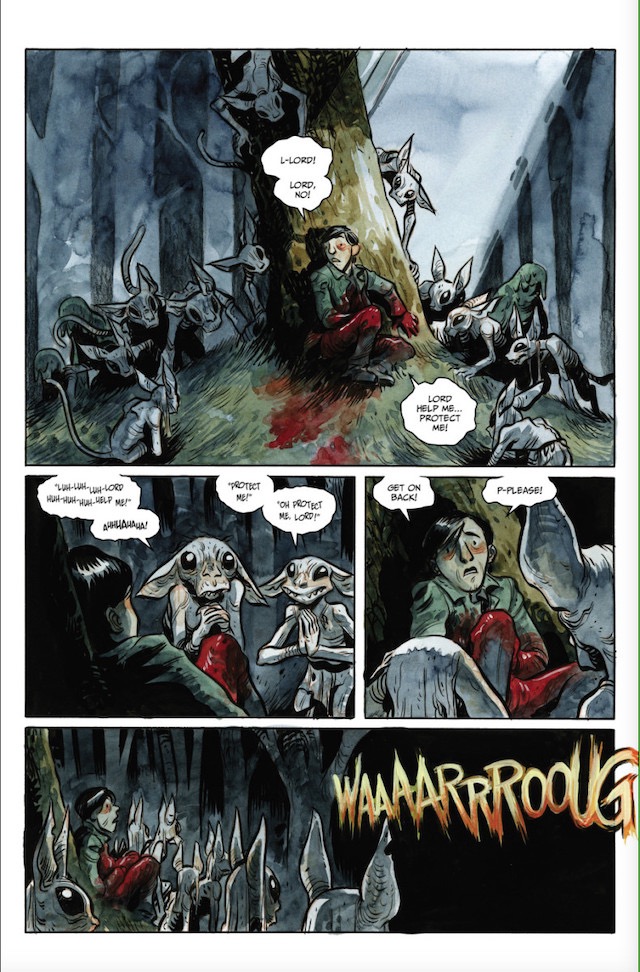
Brian and Tyler, you both recently completed drawing very long-running series, commitments that spanned years of your careers. How does that experience change you as an artist?
BH: I’m still contending with what impact it’s had on me. I think that, foremostly, it has fueled a desire to do something different! Working on one project for so long, and maintaining a consistent style for the life of the series, has me wanting to stretch a bit and try some different approaches with my work. As proud as I am of The Sixth Gun, after 6-7 years of drawing the same characters and the same genre you can begin to feel a bit creatively stifled. So, my goal as an artist for the next year or two is to focus on smaller works and experimenting a little with my style. I’m very excited about what the future holds!
Tyler Crook: I love working on long projects. I really like being able to take the time to build stories of depth and consequence and it’s nice to not have to hustle for my next gig. With long projects, I can really streamline and fine-tune my art process which is always satisfying. The main drawback for me is that there are fewer opportunities to experiment when you are trying to maintain a cohesive art style or storytelling method. So, in a lot of ways, long projects are great for focusing yourself as an artist but it can also stifle your growth.
Is a four-issue story a nice change of pace?
TC: Yes!
BH: As a writer, I find the 4-issue story arc a challenge as it isn’t a format I’ve worked in before. A majority of the comics I’ve written or drawn have either been single issues or 5 to 6-issue arcs so my brain is trained to work with that much real estate. But I love challenges and love constraints in art–it forces you to innovate and to hone your craft to a greater degree. It’s been a lot of fun so far, and the shorter issue count has forced me to really focus on what is important to the story and to make every page count.
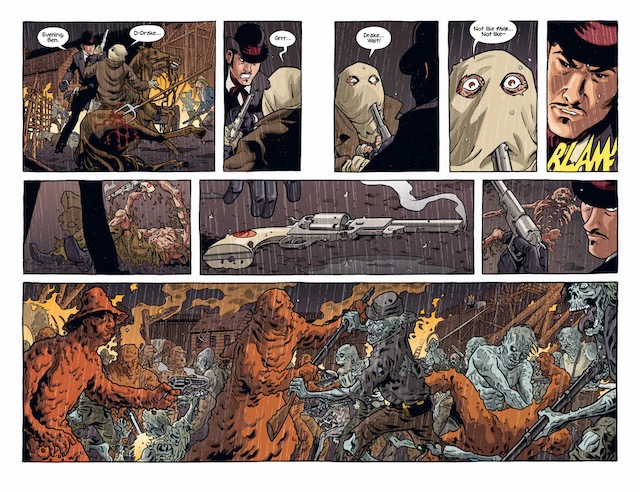
Cullen and Brian, what did you learn about collaborating as co-writers from The Sixth Gun miniseries which you created with other artists?
CB: I think the biggest thing we learned—or at least the thing we realized while working on The Sixth Gun and other books—is that it’s vital that the artist is part of the team, not just a resource. Sometimes, writers treat artists that way. Sometimes, artists approach projects with that attitude. But when everyone on the project is engaged—when they all have a voice—the final book is so much stronger. Of course, we all created this thing together, so we’re all “in it to win it.” We’ve got that component of making the comic all locked up.
BH: Cullen and I have always had a strong and respectful collaborative relationship so the work between us has always come relatively easy. The learning curve for me, when working with others, has been in how to engage with the artist and make sure that they are on the same page and share the same enthusiasm for the project. In the past, when I’ve taken that for granted, it has made for a less satisfying experience than should have been the case. As Cullen said, the key is to make sure all the creative voices are heard and fully engaged in the project. You can absolutely tell when a book is made with passion—you can feel the artists and writers having a blast!
There are a lot of different ways to make a comic together. What’s your process?
TC: For me, one of the most interesting and challenging things is working in a contemporary setting. Most of my work has been set in the past. Petrograd, Witchfinder, Harrow County were all set in very specific times and places that give the setting a lot of “tooth”. It takes a lot more work to try and breath life and energy into a contemporary setting.
CB: Forget what I just said about working together! I come up with pure genius and Brian just nibbles at the scraps I leave behind!
All right, all right. That’s not quite how it works.
Brian and I usually sit down together and outline each of the issues. (This is, mind you, after we have the overarching story in mind.) We outline in detail, determining how many pages each scene will need. Then, we divvy up the scenes and go off to write them. At this point, Brian will call me or I will call Brian with a cry of, “I need more space! Can I have one of your pages?” Once everything is written, we merge the scripts together and make sure it reads well. The final stage is a lettering pass to make sure all the dialogue reads the way we want it to before the book is lettered.
BH: As you said, there are a lot of different ways to co-write. What Cullen described above is our standard approach and the one that works best for us. But, different stories sometimes have different approaches and we’re not against shaking it up a bit and trying new approaches. Again, this goes back to our years (and years) of collaborating together. We have always had complimentary demeanors and creative impulses. We share a lot of genre interests, storytelling preferences, etc., but we also differ enough to challenge each other creatively and make something that is truly unique: a work that could only be created by the amalgamation of our creative energies. It’s what I love about the collaborative experience.
Cullen, you clearly have a deep appreciation of horror. Writing so many different stories in the genre, does it became harder to find a new angle to approach it from?
CB: I don’t think so. The great thing about horror is that there are so many flavors and sub-genres. There’s cosmic horror, comic horror, slasher horror, splatterpunk, and everything in between. With Manor Black, we’re really playing in the arena of gothic soap operas, which is new territory for me, and I love it!
Harrow County, Sixth Gun, and The Damned all have elements of horror, but very different flavors. How do those fuse together in a collaboration between the three of you?
CB: That’s another way in which we keep it fresh, really. Brian’s take on horror and Tyler’s take on horror are very different than mine alone. So, when we start putting this together, we challenge one another. We share new ideas. And that sort of melds into something that not one of us would have put together on his own.
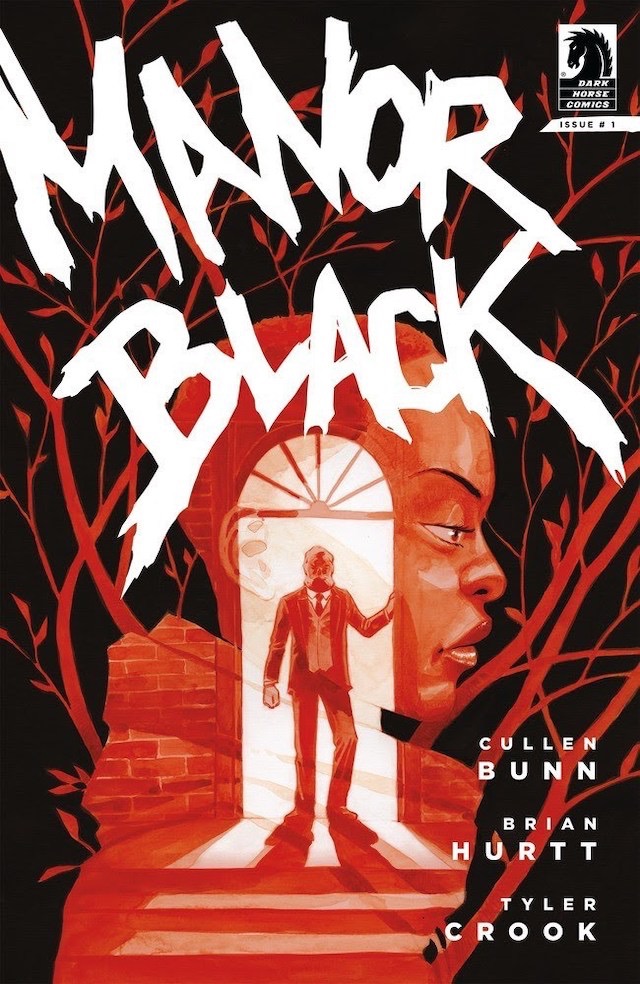
Dark Horse’s Manor Black #1 releases on July 31. Pre-order the title through its Diamond Order Codes MAY190215 for Cover A and MAY190216 for Cover B.


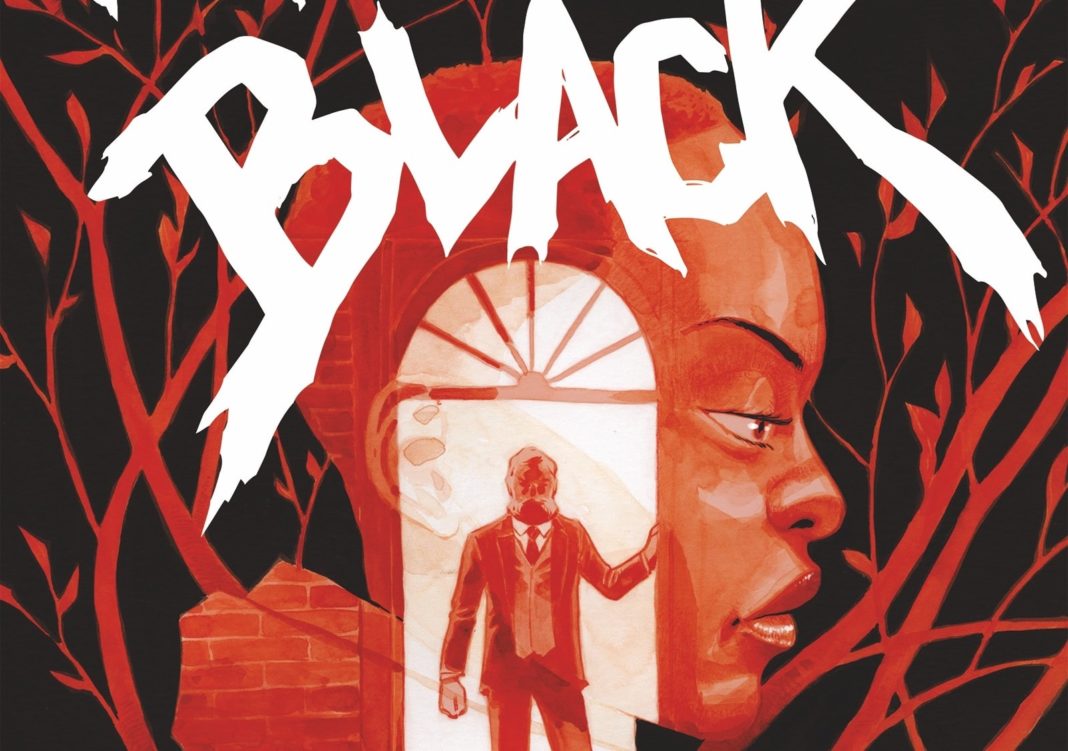


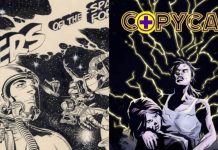



Brian Hurtt = instabuy for me!
Comments are closed.